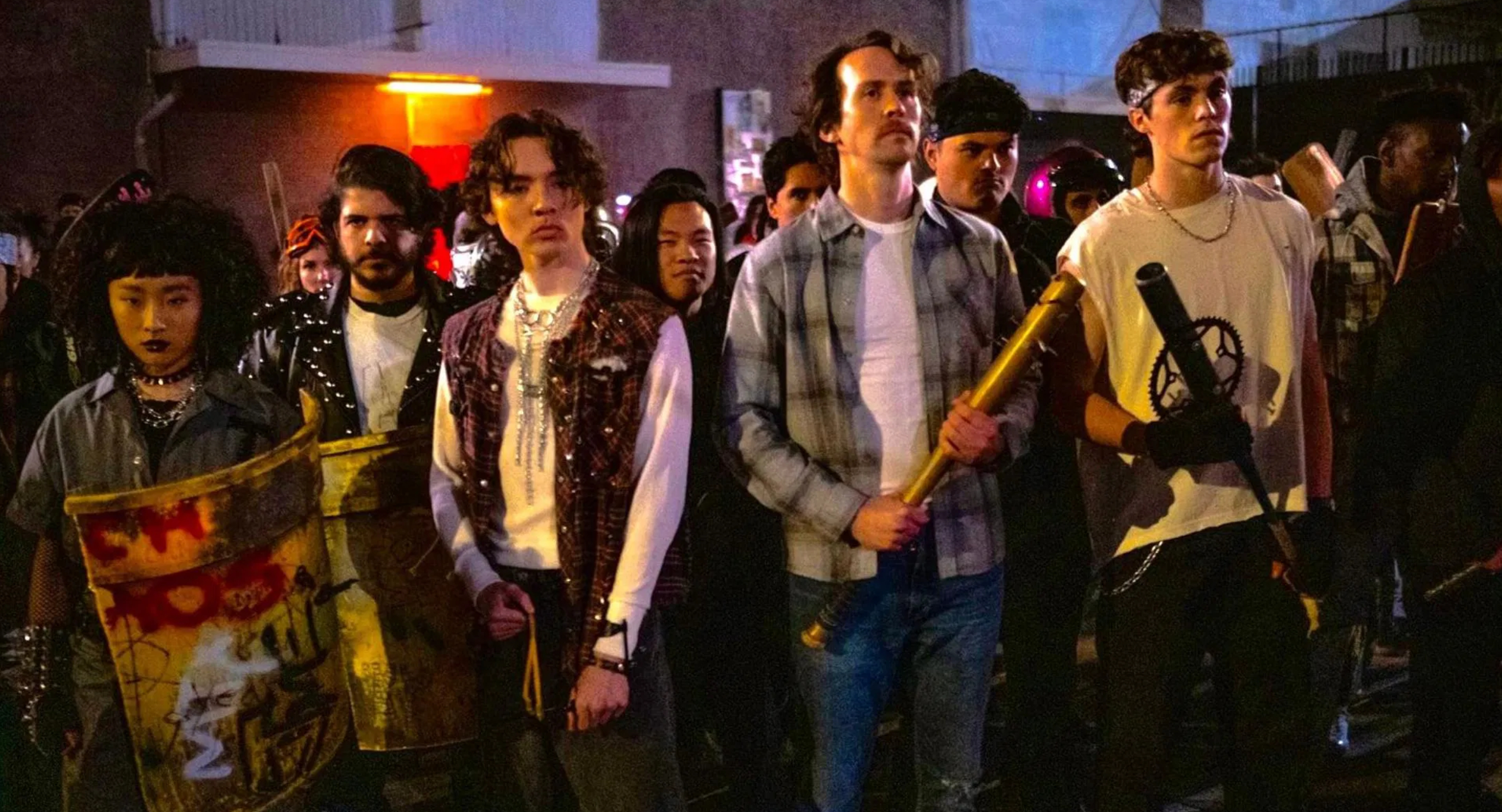Freaky Tales – Film Review
Published April 2, 2025

Anna Boden and Ryan Fleck have long been known for their unique approach to storytelling, from intimate character studies like Half Nelson to Marvel blockbusters like Captain Marvel. With Freaky Tales, the duo takes a sharp turn into the realm of pulpy, interconnected narratives, delivering an action-comedy that blends crime, music, and basketball against the backdrop of 1987 Oakland. While their love for the era and setting is undeniable, the film’s chaotic structure and uneven storytelling make it an ambitious but flawed ride.
This is a genre-blending anthology tied together by a mysterious, almost supernatural force that guides four separate but interconnected tales of underdogs fighting for their place in the city. The film balances gritty realism with exaggerated, almost comic-book-like storytelling, crafting a world where street punks battle Nazi skinheads, a rap duo vies for hip-hop dominance, an aging henchman seeks redemption, and an NBA All-Star seeks vengeance.
This structure is both the film’s biggest strength and its Achilles’ heel. Boden and Fleck certainly have a knack for world-building, immersing the audience in the neon-lit, graffiti-covered streets of Oakland with a deep sense of cultural and musical authenticity. However, the episodic format leads to some inevitable tonal inconsistencies. While each segment has its standout moments, not all of them land equally well, leaving the film feeling slightly disjointed.
One of Freaky Tales’ greatest strengths is its cast, which brings life and personality to the various narratives. Pedro Pascal, as expected, is the standout, delivering a performance that adds emotional weight to an otherwise over-the-top film. Ben Mendelsohn, a longtime collaborator of Boden and Fleck, plays someone known simply as “The Guy,” and while his role is more enigmatic than fully fleshed out, he brings the necessary menace to the film.
Normani makes a confident transition from music to acting, showcasing natural screen presence, even if her storyline doesn’t give her much to work with. Jay Ellis as Sleepy Floyd delivers a fun, charismatic performance, and Dominique Thorne continues to prove she’s a rising star.
The late Angus Cloud also appears in a supporting role, and his presence adds an extra layer of authenticity to the film’s Oakland setting. While he isn’t given much screen time, his performance is a poignant reminder of his talent and potential.
Visually, Freaky Tales captures the neon-drenched grittiness of 1987 Oakland with style. Cinematographer Jac Fitzgerald bathes the city in warm, nostalgic hues, blending urban realism with stylized action sequences. The film’s editing is energetic, matching the fast-paced, ever-shifting nature of its narratives.
The soundtrack is another highlight, seamlessly blending hip-hop, punk rock, and 80s synth-driven beats to create a vibrant auditory experience. Each segment has a distinct musical identity, reinforcing the film’s genre-blending ambitions.
Boden and Fleck’s direction is at its best when they fully embrace the absurdity of their premise, but at times, the film struggles to maintain a consistent tone. The ambitious nature of the storytelling sometimes works against the film, leading to moments that feel underdeveloped or rushed.
Freaky Tales is a bold and wildly creative attempt to capture the spirit of 1987 Oakland through an anthology of interconnected, over-the-top stories. Its biggest strengths lie in its performances (especially Pedro Pascal), its energetic direction, and its evocative setting. However, its biggest flaws come from its uneven storytelling and occasional tonal whiplash, making it a film that’s more interesting than fully successful.
For fans of stylized, genre-blending films, Freaky Tales is a fun, if messy, ride. It may not fully stick the landing, but its ambition and energy make it an enjoyable experience for those willing to embrace its chaotic nature.
